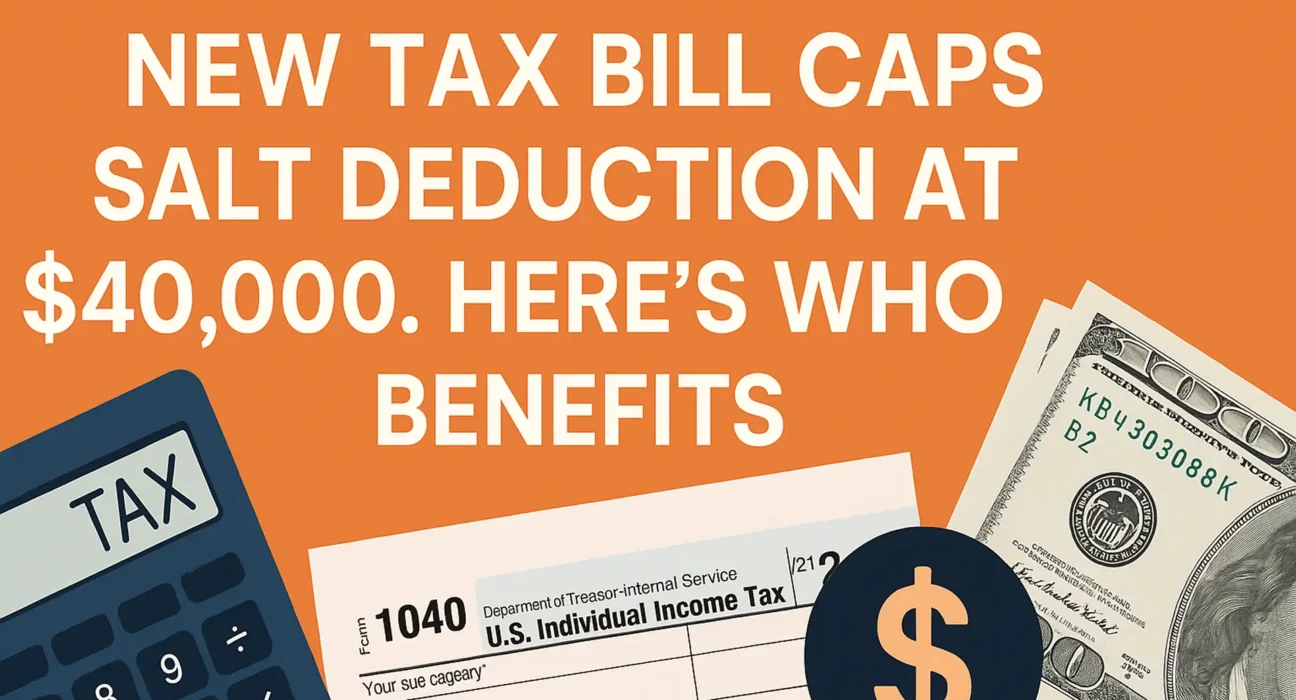Tax changes are back in the spotlight, and if you’re someone who keeps an eye on your tax bill each year, you’ll want to tune in. The buzz this time? The SALT deduction cap is being raised — and it could change how much you owe Uncle Sam.
Let’s break down what’s happening, who it helps, and why this change matters more than you might think.
What Is the SALT Deduction?
In simple terms, the SALT deduction lets taxpayers deduct State And Local Taxes (SALT) — like property tax, state income tax, and sales tax — from their federal taxable income. It was once unlimited. But thanks to the Tax Cuts and Jobs Act (TCJA) of 2017, it got slammed with a $10,000 cap.
If you’ve been grumbling about your tax return ever since, you’re not alone.
The Current SALT Tax Deduction Cap: A Quick Recap
So here’s where we are today:
- Capped at $10,000 for both individuals and married couples
- Applies only if you itemize your deductions
- Was intended to expire in 2025, unless Congress stepped in
This cap hit hardest in high-tax states like New York, California, and New Jersey — where many residents were used to deducting far more than $10K.
What’s Changing With the New Tax Bill?
Let’s talk updates. The new bill increases the SALT deduction cap to $40,000, starting in 2025. But — and here’s the catch — it only applies to taxpayers with income under $500,000.
Over time, both the $40,000 cap and the $500,000 income limit will increase by 1% annually through 2029.
But there’s more: This is not permanent. By 2030, we’re back to the $10,000 cap — unless a new law changes things again.
Also read this: Mastering the Amazon Product Title: Best Practices, Rules, and Optimization Tips
Senate vs. House Versions: What’s the Difference?
Two versions of the bill are floating around:
Senate Version
- SALT cap raised to $40,000 from 2025
- Income phaseout begins at $500,000
- Ends in 2029
- Protects pass-through business SALT workaround
House Version
- Same $40,000 cap and income phaseout
- Lasts through 2033
- Ends pass-through workaround for some professionals
So, which one’s better? Depends who you ask — and how much you make.
How Does the SALT Cap Work in Practice?
Here’s the deal:
When you file your taxes, you can choose either:
- The standard deduction, or
- Itemized deductions, including SALT (up to the cap), charitable donations, and certain medical expenses.
For 2025:
- Standard deduction is projected to be $15,000 (single) or $30,000 (married)
To benefit from the SALT deduction, your itemized deductions have to exceed the standard amount. That’s why only about 10% of taxpayers itemize today.
Who Actually Benefits From the Higher SALT Deduction?
Here’s the million-dollar question.
The biggest winners? You guessed it — higher-income households in high-tax states.
If you:
- Own property
- Earn a strong income
- Pay high state and local taxes
…then this change could save you thousands. But if you’re a middle-income earner or live in a low-tax state, you probably won’t see much difference.
The SALT Workaround: A Tax Loophole for the Rich?
You’ve probably heard about pass-through businesses — think LLCs, partnerships, or sole proprietorships.
These businesses can sometimes sidestep the SALT cap through state-level workarounds. The Senate bill keeps this loophole alive, while the House version tries to close it for some white-collar professionals.
Critics say this move favors the ultra-wealthy, allowing them to exploit the system while regular earners stay capped.
Is This Really a Good Tax Policy? Depends Who You Ask
Supporters argue:
- It brings relief to overburdened taxpayers
- It’s a fair adjustment for high cost-of-living states
Critics fire back:
- It disproportionately benefits the wealthy
- It undermines federal tax progressivity
- It’s a band-aid solution that doesn’t fix broader tax inequities
According to the Tax Law Center at NYU, it’s “a nonsensical approach to tax policy.”
How Long Will This New SALT Deduction Last?
Not long — unless Congress steps in again.
- Senate bill: Higher cap ends in 2029
- House bill: Keeps it through 2033
- Either way, we’re looking at temporary relief
And remember: once 2030 rolls around, unless there’s new legislation, we go back to the $10,000 cap.
What Should Taxpayers Do Now?
Simple: plan ahead.
- If you expect to benefit, talk to your tax advisor early
- Consider how the SALT deduction fits into your overall tax strategy
- Keep tabs on changes — this isn’t final yet!
The final bill still needs to pass the House and get signed into law, so nothing’s set in stone just yet.
Conclusion: Is the New SALT Deduction Cap Good News?
For many, yes — especially if you’re a homeowner in a high-tax state earning less than $500K a year. It’s a bigger deduction, which could mean more money in your pocket.
But it’s not a win for everyone. Most taxpayers still take the standard deduction, and for them, this won’t change much. Plus, critics warn that it’s just another way to give tax breaks to the wealthy under the guise of relief.
So, is it a solution or a short-term patch? We’ll let you decide — but stay informed and be ready to act when the final version lands.
FAQs
1. What is the SALT deduction?
The SALT deduction allows taxpayers to deduct state and local taxes — including property, income, or sales taxes — from their federal taxable income.
2. What is the new SALT deduction cap?
The new tax bill proposes raising the SALT deduction cap to $40,000 starting in 2025, with phaseouts beginning for those earning over $500,000.
3. Who benefits the most from a higher SALT deduction cap?
Higher-income earners, especially those in high-tax states like California, New York, and New Jersey, benefit most from the increased cap.
4. Is this tax change permanent?
No. The higher cap is temporary. Under the Senate version, it ends in 2029. Under the House version, it lasts until 2033.
5. What is the SALT cap workaround for pass-through businesses?
Some states allow pass-through businesses to deduct SALT at the entity level, avoiding the $10,000 personal cap. The Senate bill keeps this workaround.
6. Should I switch to itemizing if the cap is raised?
Only if your itemized deductions, including the new SALT cap, exceed the standard deduction. A tax advisor can help you decide what’s best.





